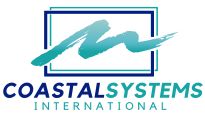Comfort and Amenity
When it comes to waterfront development, the experience on land is just as important as the view of the water. Comfort and amenity are what make a destination inviting, functional, and memorable. At Coastal Systems, we focus on human-centered design—spaces that people want to visit, linger in, and return to. Our goal is to make waterfront areas feel easy, enjoyable, and intuitive, all while supporting the surrounding environment and long-term operational needs.
Designing for Everyday Use
It’s not enough to build something that looks good on paper. Successful waterfront destinations must serve the daily needs of residents, guests, and visitors. That means comfortable seating, shaded spaces, restrooms, and clean, well-maintained walking surfaces. These aren’t afterthoughts—they’re critical infrastructure for user experience. We consider things like seating orientation toward the water, materials that stay cool underfoot, and shade solutions that move with the sun.
Materials are chosen for both comfort and durability. For example, wood decking can provide warmth underfoot, but composite options may be better suited to high-traffic or high-humidity environments. Paving surfaces are selected to balance aesthetics, maintenance needs, and accessibility. And lighting is planned to enhance nighttime comfort while maintaining safety and ambiance.
Integrated Amenities that Add Value
Comfort features are also opportunities to add economic value. Boardwalks lined with shade trees, food kiosks, or pop-up vendor spaces create flexible zones that attract people and encourage spending. The same goes for amenity nodes like outdoor showers, beach access lockers, and bicycle parking stations. These touches increase time-on-site and drive repeat visits, which is critical for hospitality and mixed-use projects.
At Coastal Systems, we often incorporate built-in furniture, interactive fountains, water misters, and mobile charging stations—elements that enhance usability without cluttering the environment. By designing with versatility in mind, we give operators the tools to activate the site differently by season, event, or audience.
Shaping the Microclimate
In coastal environments, managing comfort goes beyond traditional design. We carefully assess wind patterns, solar exposure, humidity levels, and noise. We might position buildings or plantings to block prevailing winds or orient pathways to encourage natural ventilation. Green infrastructure like bioswales and planted berms can also help cool down spaces, manage runoff, and create buffers from road noise or neighboring developments.
Creating microclimates—places where temperature and wind feel noticeably different than the surrounding area—is one of our specialties. Whether it’s a shaded grove near a kayak launch or a breezy pavilion next to a beach bar, our designs are deeply tied to their environmental context. The goal is to keep guests comfortable in every season and at any time of day.
Universal Access to Comfort
Amenities should serve everyone. We design with universal access at the core—wide paths, minimal grade changes, smooth transitions between materials, and ADA-compliant seating and facilities. But it goes beyond regulations. We believe comfort is inclusive. That means considering how families, seniors, and people with disabilities use public and private spaces, and making sure the layout supports their needs.
This includes things like low-height drinking fountains, stroller-friendly ramps, and areas that are safe for kids to explore without obstructing adult pathways. It also includes auditory and tactile cues for users with sensory or visual impairments. In the end, these thoughtful details make spaces better for everyone—not just those with special access needs.
Programming for Comfort and Engagement
Comfort isn’t just physical—it’s experiential. Programming plays a huge role in how people feel in a space. That’s why we work closely with clients to incorporate flexible zones that can be used for fitness classes, art installations, music events, or educational programming. Open lawns, stage areas, and popup vendor zones give waterfronts the ability to evolve over time and serve multiple purposes.
We also think about how amenities connect to broader networks. Is the waterfront part of a local greenway or citywide trail system? Can someone arrive by boat and rent a bike? These details matter because they build a deeper, more rewarding experience for visitors and locals alike. When comfort and amenity are paired with great planning, the result is a place that people keep coming back to.
Realizing Visions for over 30 years
